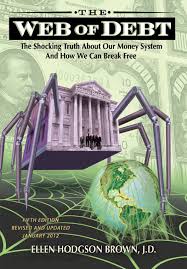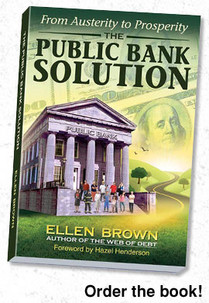Category Archives: Big Banks
Roberts, Kranzler, Blow Lid Off Gold Manipulation by Federal Reserve
The Hows and Whys of Gold Price Manipulation
By: Paul Craig Roberts and Dave Kranzler
January 17, 2014
visit www.paulcraigroberts.org for more
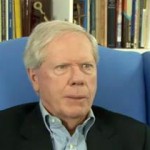 The deregulation of the financial system during the Clinton and George W. Bush regimes had the predictable result: financial concentration and reckless behavior. A handful of banks grew so large that financial authorities declared them “too big to fail.” Removed from market discipline, the banks became wards of the government requiring massive creation of new money by the Federal Reserve in order to support through the policy of Quantitative Easing the prices of financial instruments on the banks’ balance sheets and in order to finance at low interest rates trillion dollar federal budget deficits associated with the long recession caused by the financial crisis. Continue reading Roberts, Kranzler, Blow Lid Off Gold Manipulation by Federal Reserve
The deregulation of the financial system during the Clinton and George W. Bush regimes had the predictable result: financial concentration and reckless behavior. A handful of banks grew so large that financial authorities declared them “too big to fail.” Removed from market discipline, the banks became wards of the government requiring massive creation of new money by the Federal Reserve in order to support through the policy of Quantitative Easing the prices of financial instruments on the banks’ balance sheets and in order to finance at low interest rates trillion dollar federal budget deficits associated with the long recession caused by the financial crisis. Continue reading Roberts, Kranzler, Blow Lid Off Gold Manipulation by Federal Reserve
Federal Judge Blasts Government, Justice System For Failure To Prosecute Banksters
Why Have No High Level Executives Been Prosecuted In Connection With The Financial Crisis?
By Jed S. Rakoff November 15, 2013

The following comes to us from the Honorable Judge Jed S. Rakoff, who sits in the U.S. District Court for the Southern District of New York. Judge Rakoff is also an adjunct professor at Columbia Law School. Re-posted from the Columbia Law School blog.
Continue reading Federal Judge Blasts Government, Justice System For Failure To Prosecute Banksters
The Federal Reserve: 100 Years of Deceit and Corruption
It’s Time For the Government to Seize the Federal Reserve and Make it a Public Utility
by Ellen Brown

December 23rd, 2013, marks the 100th anniversary of the Federal Reserve, warranting a review of its performance. Has it achieved the purposes for which it was designed?
The answer depends on whose purposes we are talking about. For the banks, the Fed has served quite well. For the laboring masses whose populist movement prompted it, not much has changed in a century.
Thwarting Populist Demands

Continue reading The Federal Reserve: 100 Years of Deceit and Corruption
Amend The Federal Reserve
We Need a Central Bank That Serves Main Street
by Ellen Brown
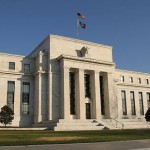 December 23rd marks the 100th anniversary of the Federal Reserve. Dissatisfaction with its track record has prompted calls to audit the Fed and end the Fed. At the least, Congress needs to amend the Fed, modifying the Federal Reserve Act to give the central bank the tools necessary to carry out its mandates.
December 23rd marks the 100th anniversary of the Federal Reserve. Dissatisfaction with its track record has prompted calls to audit the Fed and end the Fed. At the least, Congress needs to amend the Fed, modifying the Federal Reserve Act to give the central bank the tools necessary to carry out its mandates.
The Federal Reserve is the only central bank with a dual mandate. It is charged not only with maintaining low, stable inflation but with promoting maximum sustainable employment. Yet unemployment remains stubbornly high, despite four years of radical tinkering with interest rates and quantitative easing (creating money on the Fed’s books). After pushing interest rates as low as they can go, the Fed has admitted that it has run out of tools.
At an IMF conference on November 8, 2013, former Treasury Secretary Larry Summers suggested that since near-zero interest rates were not adequately promoting people to borrow and spend, it might now be necessary to set interest at below zero. This idea was lauded and expanded upon by other ivory-tower inside-the-box thinkers, including Paul Krugman.
Negative interest would mean that banks would charge the depositor for holding his deposits rather than paying interest on them. Runs on the banks would no doubt follow, but the pundits have a solution for that: move to a cashless society, in which all money would be electronic. “This would make it impossible to hoard cash outside the bank,” wrote Danny Vinik in Business Insider, “allowing the Fed to cut interest rates to below zero, spurring people to spend more.” He concluded:
. . . Summers’ speech is a reminder to all liberals that he is a brilliant economist who grasps the long-term issues of monetary policy and would likely have made an exemplary Fed chair.

Keeping the Sheeple in the dark
Maybe; but to ordinary mortals living in the less rarefied atmosphere of the real world, the proposal to impose negative interest rates looks either inane or like the next giant step toward the totalitarian New World Order. Business Week quotes Douglas Holtz-Eakin, a former director of the Congressional Budget Office: “We’ve had four years of extraordinarily loose monetary policy without satisfactory results, and the only thing they come up with is we need more?”
Paul Craig Roberts, former Assistant Secretary of the Treasury, calls the idea “harebrained.” He is equally skeptical of quantitative easing, the Fed’s other tool for stimulating the economy. Roberts points to Andrew Huszar’s explosive November 11th Wall Street Journal article titled “Confessions of a Quantitative Easer,” in which Huszar says that QE was always intended to serve Wall Street, not Main Street. Huszar’s assignment at the Fed was to manage the purchase of $1.25 trillion in mortgages with dollars created on a computer screen. He says he resigned when he realized that the real purpose of the policy was to drive up the prices of the banks’ holdings of debt instruments, to provide the banks with trillions of dollars at zero cost with which to lend and speculate, and to provide the banks with “fat commissions from brokering most of the Fed’s QE transactions.”
A Helicopter Drop That Missed Its Target
All this is far from the helicopter drop proposed by Ben Bernanke in 2002 as a quick fix for deflation. He told the Japanese, “The U.S. government has a technology, called a printing press (or, today, its electronic equivalent), that allows it to produce as many U.S. dollars as it wishes at essentially no cost.” Later in the speech he discussed “a money-financed tax cut,” which he said was “essentially equivalent to Milton Friedman’s famous ‘helicopter drop’ of money.” Deflation could be cured, said Professor Friedman, simply by dropping money from helicopters.
But there has been no cloudburst of money raining down on the people. The money has gotten only into the reserve accounts of banks. John Lounsbury, writing in Econintersect, observes that Friedman’s idea of a helicopter drop involved debt-free money printed by the government and landing in people’s bank accounts.
“He foresaw the money entering the economy through bank deposits, not through bank reserves which was the pathway available to Bernanke. . . . [W]hen Ben Bernanke fired up his helicopter engines he took the only path available to him.”
Bernanke created debt-free money and bought government debt with it, returning the interest to the Treasury. The result was interest-free credit, a good deal for the government. But the problem, says Lounsbury, is that:
The helicopters dropped all the money into a hole in the ground (excess reserve accounts) and very little made its way into the economy. It was essentially a rearrangement of the balance sheets of the creditor nation with little impact on the debtor nation.
. . . The fatal flaw of QE is that it delivers money to the accounts of the creditors and does nothing for the accounts of the debtors. Bad debts remain unserviced and the debt crisis continues.
Thinking Outside the Box
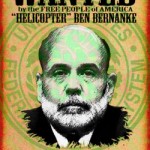
Fed Chief
Bernanke delivered the money to the creditors because that was all the Federal Reserve Act allowed. If the Fed is to fulfill its mandate, it clearly needs more tools; and that means amending the Act. Harvard professor Ken Rogoff, who spoke at the November 2013 IMF conference before Larry Summers, suggested several possibilities; and one was to broaden access to the central bank, allowing anyone to have an ATM at the Fed.
Rajiv Sethi, Barnard/Columbia Professor of Economics, expanded on this idea in a blog titled “The Payments System and Monetary Transmission.” He suggested making the Federal Reserve the repository for all deposit banking. This would make deposit insurance unnecessary; it would eliminate the need to impose higher capital requirements; and it would allow the Fed to implement monetary policy by targeting debtor rather than creditor balance sheets. Instead of returning its profits to the Treasury, the Fed could do a helicopter drop directly into consumer bank accounts, stimulating demand in the consumer economy.
John Lounsbury expanded further on these ideas. He wrote in Econintersect that they would open a pathway for investment banking and depository banking to be separated from each other, analogous to that under Glass-Steagall. Banks would no longer be too big to fail, since they could fail without destroying the general payment system of the economy. Lounsbury said the central bank could operate as a true public bank and repository for all federal banking transactions, and it could operate in the mode of a postal savings system for the general populace.
Earlier Central Bank Ventures into Commercial Lending
That sounds like a radical departure today, but the Fed has ventured into commercial banking before. In 1934, Section 13(b) was added to the Federal Reserve Act, authorizing the Fed to “make credit available for the purpose of supplying working capital to established industrial and commercial businesses.” This long-forgotten section was implemented and remained in effect for 24 years. In a 2002 article on the Minneapolis Fed’s website called “Lender of More Than Last Resort,” David Fettig noted that 13(b) allowed Federal Reserve banks to make loans directly to any established businesses in their districts, and to share in loans with private lending institutions if the latter assumed 20 percent of the risk. No limitation was placed on the amount of a single loan.
Fettig wrote that “the Fed was still less than 20 years old and many likely remembered the arguments put forth during the System’s founding, when some advocated that the discount window should be open to all comers, not just member banks.” In Australia and other countries, the central bank was then assuming commercial as well as central bank functions.
Section 13(b) was eventually repealed, but the Federal Reserve Act retained enough vestiges of it in 2008 to allow the Fed to intervene to save a variety of non-bank entities from bankruptcy. The problem was that the tool was applied selectively. The recipients were major corporate players, not local businesses or local governments. Fettig wrote:
Section 13(b) may be a memory, . . . but Section 13 paragraph 3 . . . is alive and well in the Federal Reserve Act. . . . [T]his amendment allows, “in unusual and exigent circumstances,” a Reserve bank to advance credit to individuals, partnerships and corporations that are not depository institutions.
In 2008, the Fed bailed out investment company Bear Stearns and insurer AIG, neither of which was a bank. Bear Stearns got almost $1 trillion in short-term loans, with interest rates as low as 0.5%. The Fed also made loans to other corporations, including GE, McDonald’s, and Verizon
In 2010, Section 13(3) was modified by the Dodd-Frank bill, which replaced the phrase “individuals, partnerships and corporations” with the vaguer phrase “any program or facility with broad-based eligibility.” As explained in the notes to the bill:
Only Broad-Based Facilities Permitted. Section 13(3) is modified to remove the authority to extend credit to specific individuals, partnerships and corporations. Instead, the Board may authorize credit under section 13(3) only under a program or facility with “broad-based eligibility.”
What programs have “broad-based eligibility” is not clear from a reading of the Section, but it isn’t individuals or local businesses. It also isn’t state and local governments.
No Others Need Apply
In 2009, President Obama proposed that the Fed extend its largess to the cash-strapped cities and states battered by the banking crisis. “Small businesses and state and local governments are having serious difficulty obtaining necessary financing from debt markets,” Obama said. He proposed that the Fed buy municipal bonds to cut their rising borrowing costs.
The proposed municipal bond facility would have been based on the Fed program to buy commercial paper, which had almost single-handedly propped up the market for short-term corporate borrowing. Investors welcomed the muni bond proposal as a first step toward supporting the market.
But Bernanke rejected the proposal. Why? It could hardly be argued that the Fed didn’t have the money. The collective budget deficit of the states for 2011 was projected at $140 billion, a drop in the bucket compared to the sums the Fed had managed to come up with to bail out the banks. According to data released in 2011, the central bank had provided roughly $3.3 trillion in liquidity and $9 trillion in short-term loans and other financial arrangements to banks, multinational corporations, and foreign financial institutions following the credit crisis of 2008. Later revelations pushed the sum up to $16 trillion or more.
Bernanke’s reasoning in saying no to the muni bond facility was that he lacked the statutory tools.. The Fed is limited by statute to buying municipal government debt with maturities of six months or less that is directly backed by tax or other assured revenue, a form of debt that makes up less than 2% of the overall muni market.
The Federal Reserve Act was drafted by bankers to create a banker’s bank that would serve their interests. It is their own private club, and its legal structure keeps all non-members out. A century after the Fed’s creation, a sober look at its history leads to the conclusion that it is a privately controlled institution whose corporate owners use it to direct our entire economy for their own ends, without democratic influence or accountability. Substantial changes are needed to transform the Fed, and these will only come with massive public pressure.
Congress has the power to amend the Fed – just as it did in 1934, 1958 and 2010. For the central bank to satisfy its mandate to promote full employment and to become an institution that serves all the people, not just the 1%, the Fed needs fundamental reform.

Ellen Brown is an attorney, president of the Public Banking Institute, and author of twelve books, including the best-selling Web of Debt. In The Public Bank Solution, her latest book, she explores successful public banking models historically and globally. Her blog articles are at EllenBrown.com.
The Public Bank Solution
What Wall Street Doesn’t Want You To Know
Ellen Brown’s New Book Offers Another Alternative to the Big Banks
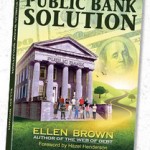 Shock waves from one Wall Street scandal after another have completely disillusioned us with our banking system; yet we cannot do without banks. Nearly all money today is simply bank credit. Economies run on it, and it is created when banks make loans. The main flaw in the current model is that private profiteers have acquired control of the credit spigots. They can cut off the flow, direct it to their cronies, and manipulate it for personal gain at the expense of the producing economy. The benefits of bank credit can be maintained while eliminating these flaws, through a system of banks operated as public utilities, serving the public interest and returning their profits to the public. This book looks at the public bank alternative, and shows with examples from around the world and through history that it works admirably well, providing the key to sustained high performance for the economy and well-being for the people.
Shock waves from one Wall Street scandal after another have completely disillusioned us with our banking system; yet we cannot do without banks. Nearly all money today is simply bank credit. Economies run on it, and it is created when banks make loans. The main flaw in the current model is that private profiteers have acquired control of the credit spigots. They can cut off the flow, direct it to their cronies, and manipulate it for personal gain at the expense of the producing economy. The benefits of bank credit can be maintained while eliminating these flaws, through a system of banks operated as public utilities, serving the public interest and returning their profits to the public. This book looks at the public bank alternative, and shows with examples from around the world and through history that it works admirably well, providing the key to sustained high performance for the economy and well-being for the people.

Although this site supports credit unions, we also recognize that Ellen Brown’s plan to put in State-Owned Public Banks would be another way to short-circuit the Bankster outlaws at the Federal Reserve, which is the private institution that is owned by the international banking cartel. The Federal Reserve is currently destroying the economy of the United States by printing Trillions of dollars of worthless paper. The only thing that kept some confidence in the dollar was that it was a petrodollar, and dollars were the only currency allowed in oil transactions. Now however, other countries, like Iran,Venezuela, and China are accepting other currencies for oil, rendering an end to our dominance of the world, and beginning a currency collapse.
Click Here to go to Ellen Brown’s website to order this eye-opening book.
The Dying Dollar – Paul Craig Roberts
Federal Reserve and Wall Street Assassinate U.S. Dollar
by Paul Craig Roberts
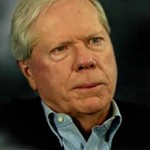 Since 2006, the US dollar has experienced a one-quarter to one-third drop in value to the Chinese yuan, depending on the choice of base.
Since 2006, the US dollar has experienced a one-quarter to one-third drop in value to the Chinese yuan, depending on the choice of base.
Now China is going to let the dollar decline further in value. China also says it is considering undermining the petrodollar by pricing oil futures on the Shanghai Futures Exchange in yuan. This on top of the growing avoidance of the dollar to settle trade imbalances means that the dollar’s role as reserve currency is coming to an end, which means the termination of the US as financial bully and financial imperialist. This blow to the dollar in addition to the blows delivered by jobs offshoring and the uncovered bets in the gambling casino created by financial deregulation means that the US economy as we knew it is coming to an end.
The US economy is already in shambles, with bond and stock markets propped up by massive and historically unprecedented Fed money printing pouring liquidity into financial asset prices. This month at the IMF annual conference, former Treasury Secretary Larry Summers said that to achieve full employment in the US economy would require negative real interest rates. Negative real interest rates could only be achieved by eliminating cash, moving to digital money that can only be kept in banks, and penalizing people for saving.
The future is developing precisely as I have been predicting
 As the dollar enters its death throes, the lawless Federal Reserve and the Wall Street criminals will increase their shorting of gold in the paper futures market, thereby driving the remnants of the West’s gold into Asian hands.
As the dollar enters its death throes, the lawless Federal Reserve and the Wall Street criminals will increase their shorting of gold in the paper futures market, thereby driving the remnants of the West’s gold into Asian hands.
PBOC Says No Longer in China’s Interest to Increase Reserves
By Bloomberg News – Nov 20, 2013
The People’s Bank of China said the country does not benefit any more from increases in its foreign-currency holdings, adding to signs policymakers will rein in dollar purchases that limit the yuan’s appreciation.
“It’s no longer in China’s favor to accumulate foreign-exchange reserves,” Yi Gang, a deputy governor at the central bank, said in a speech organized by China Economists 50 Forum at Tsinghua University yesterday. The monetary authority will “basically” end normal intervention in the currency market and broaden the yuan’s daily trading range, Governor Zhou Xiaochuan wrote in an article in a guidebook explaining reforms outlined last week following a Communist Party meeting.
Click Here to go to Paul Craig Roberts website
The Armageddon Looting Machine
The Looming Mass Destruction From Derivatives
by Ellen Brown
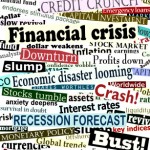 Increased regulation and low interest rates are driving lending from the regulated commercial banking system into the unregulated shadow banking system. The shadow banks, although free of government regulation, are propped up by a hidden government guarantee in the form of safe harbor status under the 2005 Bankruptcy Reform Act pushed through by Wall Street. The result is to create perverse incentives for the financial system to self-destruct.
Increased regulation and low interest rates are driving lending from the regulated commercial banking system into the unregulated shadow banking system. The shadow banks, although free of government regulation, are propped up by a hidden government guarantee in the form of safe harbor status under the 2005 Bankruptcy Reform Act pushed through by Wall Street. The result is to create perverse incentives for the financial system to self-destruct.
Five years after the financial collapse precipitated by the Lehman Brothers bankruptcy on September 15, 2008, the risk of another full-blown financial panic is still looming large, despite the Dodd Frank legislation designed to contain it. As noted in a recent Reuters article, the risk has just moved into the shadows:
“[B]anks are pulling back their balance sheets from the fringes of the credit markets, with more and more risk being driven to unregulated lenders that comprise the $60 trillion “shadow-banking” sector.”
Increased regulation and low interest rates have made lending to homeowners and small businesses less attractive than before 2008. The easy subprime scams of yesteryear are no more. The void is being filled by the shadow banking system. Shadow banking comes in many forms, but the big money today is in repos and derivatives. The notional (or hypothetical) value of the derivatives market has been estimated to be as high as $1.2 quadrillion, or twenty times the GDP of all the countries of the world combined.
According to Hervà Hannoun, Deputy General Manager of the Bank for International Settlements, investment banks as well as commercial banks may conduct much of their business in the shadow banking system (SBS), although most are not generally classed as SBS institutions themselves. At least one financial regulatory expert has said that regulated banking organizations are the largest shadow banks.
The Hidden Government Guarantee that Props Up the Shadow Banking System
According to Dutch economist Enrico Perotti, banks are able to fund their loans much more cheaply than any other industry because they offer “liquidity on demand.” The promise that the depositor can get his money out at any time is made credible by government-backed deposit insurance and access to central bank funding. But what guarantee underwrites the shadow banks? Why would financial institutions feel confident lending cheaply in the shadow market, when it is not protected by deposit insurance or government bailouts?
Perotti says that liquidity-on-demand is guaranteed in the SBS through another, lesser-known form of government guarantee: “safe harbor” status in bankruptcy. Repos and derivatives, the stock in trade of shadow banks, have “super-priority” over all other claims. Perotti writes:
“Security pledging grants access to cheap funding thanks to the steady expansion in the EU and US of “safe harbor status”. Also called bankruptcy privileges, this ensures lenders secured on financial collateral immediate access to their pledged securities. . . .
“Safe harbor status grants the privilege of being excluded from mandatory stay, and basically all other restrictions. Safe harbor lenders, which at present include repos and derivative margins, can immediately repossess and resell pledged collateral.
“This gives repos and derivatives extraordinary super-priority over all other claims, including tax and wage claims, deposits, real secured credit and insurance claims. Critically, it ensures immediacy (liquidity) for their holders. Unfortunately, it does so by undermining orderly liquidation.”
When orderly liquidation is undermined, there is a rush to get the collateral, which can actually propel the debtor into bankruptcy. The amendment to the Bankruptcy Reform Act of 2005 that created this favored status for repos and derivatives was pushed through by the banking lobby with few questions asked. In a December 2011 article titled ” Plan B — How to Loot Nations and Their Banks Legally,” documentary film-maker David Malone wrote:
“This amendment which was touted as necessary to reduce systemic risk in financial bankruptcies . . . allowed a whole range of far riskier assets to be used . . . . The size of the repo market hugely increased and riskier assets were gladly accepted as collateral because traders saw that if the person they had lent to went down they could get [their] money back before anyone else and no one could stop them.
Burning Down the Barn to Get the Insurance
Safe harbor status creates the sort of perverse incentives that make derivatives “financial weapons of mass destruction,” as Warren Buffett famously branded them. It is the equivalent of burning down the barn to collect the insurance. Says Malone:
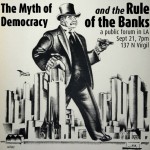 “All other creditors — bond holders — risk losing some of their money in a bankruptcy. So they have a reason to want to avoid bankruptcy of a trading partner. Not so the repo and derivatives partners. They would now be best served by looting the company — perfectly legally — as soon as trouble seemed likely. In fact the repo and derivatives traders could push a bank that owed them money over into bankruptcy when it most suited them as creditors. When, for example, they might be in need of a bit of cash themselves to meet a few pressing creditors of their own.
“All other creditors — bond holders — risk losing some of their money in a bankruptcy. So they have a reason to want to avoid bankruptcy of a trading partner. Not so the repo and derivatives partners. They would now be best served by looting the company — perfectly legally — as soon as trouble seemed likely. In fact the repo and derivatives traders could push a bank that owed them money over into bankruptcy when it most suited them as creditors. When, for example, they might be in need of a bit of cash themselves to meet a few pressing creditors of their own.
“The collapse of . . . Bear Stearns, Lehman Brothers and AIG were all directly because repo and derivatives partners of those institutions suddenly stopped trading and “looted’ them instead.”
The global credit collapse was triggered, it seems, not by wild subprime lending but by the rush to grab collateral by players with Congressional-approved safe harbor status for their repos and derivatives.
Bear Stearns and Lehman Brothers were strictly investment banks, but now we have giant depository banks gambling in derivatives as well; and with the repeal of the Glass-Steagall Act that separated depository and investment banking, they are allowed to commingle their deposits and investments. The risk to the depositors was made glaringly obvious when MF Global went bankrupt in October 2011. Malone wrote:
“When MF Global went down it did so because its repo, derivative and hypothecation partners essentially foreclosed on it. And when they did so they then “looted’ the company. And because of the co-mingling of clients money in the hypothecation deals the “looters’ also seized clients money as well. . . JPMorgan allegedly has MF Global money while other people’s lawyers can only argue about it.”
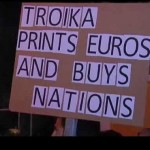 MF Global was followed by the Cyprus “bail-in” — the confiscation of depositor funds to recapitalize the country’s failed banks. This was followed by the coordinated appearance of bail-in templates worldwide, mandated by the Financial Stability Board, the global banking regulator in Switzerland.
MF Global was followed by the Cyprus “bail-in” — the confiscation of depositor funds to recapitalize the country’s failed banks. This was followed by the coordinated appearance of bail-in templates worldwide, mandated by the Financial Stability Board, the global banking regulator in Switzerland.
The Auto-Destruct Trip Wire on the Banking System
Bail-in policies are being necessitated by the fact that governments are balking at further bank bailouts. In the US, the Dodd-Frank Act (Section 716) now bans taxpayer bailouts of most speculative derivative activities. That means the next time we have a Lehman-style event, the banking system could simply collapse into a black hole of derivative looting. Malone writes:
“. . . The bankruptcy laws allow a mechanism for banks to disembowel each other. The strongest lend to the weaker and loot them when the moment of crisis approaches. The plan allows the biggest banks, those who happen to be burdened with massive holdings of dodgy euro area bonds, to leap out of the bond crisis and instead profit from a bankruptcy which might otherwise have killed them. All that is required is to know the import of the bankruptcy law and do as much repo, hypothecation and derivative trading with the weaker banks as you can.
“. . . I think this means that some of the biggest banks, themselves, have already constructed and greatly enlarged a now truly massive trip wired auto-destruct on the banking system.”
The weaker banks may be the victims, but it is we the people who will wind up holding the bag. Malone observes:
“For the last four years who has been putting money in to the banks? And who has become a massive bond holder in all the banks? We have. First via our national banks and now via the Fed, ECB and various tax payer funded bail out funds. We are the bond holders who would be shafted by the Plan B looting. We would be the people waiting in line for the money the banks would have already made off with. . . .
“. . . [T]he banks have created a financial Armageddon looting machine. Their Plan B is a mechanism to loot not just the more vulnerable banks in weaker nations, but those nations themselves. And the looting will not take months, not even days. It could happen in hours if not minutes.”
Crisis and Opportunity: Building a Better Mousetrap
There is no way to regulate away this sort of risk. If both the conventional banking system and the shadow banking system are being maintained by government guarantees, then we the people are bearing the risk. We should be directing where the credit goes and collecting the interest. Banking and the creation of money-as-credit need to be made public utilities, owned by the public and having a mandate to serve the public. Public banks do not engage in derivatives.
Today, virtually the entire circulating money supply (M1, M2 and M3) consists of privately-created “bank credit” — money created on the books of banks in the form of loans. If this private credit system implodes, we will be without a money supply. One option would be to return to the system of government-issued money that was devised by the American colonists, revived by Abraham Lincoln during the Civil War, and used by other countries at various times and places around the world. Another option would be a system of publicly-owned state banks on the model of the Bank of North Dakota, leveraging the capital of the state backed by the revenues of the state into public bank credit for the use of the local economy.
Change happens historically in times of crisis, and we may be there again today.
Ellen Brown is an attorney, president of the Public Banking Institute, and author of 12 books, including WEB OF DEBT and its newly-released sequel, THE PUBLIC BANK SOLUTION. Her websites are http://WebofDebt.com, http://PublicBankSolution.com, and http://PublicBankingInstitute.org.
Ellen Brown on the Secret Agenda in Syria
Larry Summers and Cronies Opening the World to Criminal Banksters
by Ellen Brown
September 4, 2013
 In an August 2013 article titled “ Larry Summers and the Secret ‘End-game’ Memo,” Greg Palast posted evidence of a secret late-1990s plan devised by Wall Street and U.S. Treasury officials to open banking to the lucrative derivatives business. To pull this off required the relaxation of banking regulations not just in the US but globally. The vehicle to be used was the Financial Services Agreement of the World Trade Organization.
In an August 2013 article titled “ Larry Summers and the Secret ‘End-game’ Memo,” Greg Palast posted evidence of a secret late-1990s plan devised by Wall Street and U.S. Treasury officials to open banking to the lucrative derivatives business. To pull this off required the relaxation of banking regulations not just in the US but globally. The vehicle to be used was the Financial Services Agreement of the World Trade Organization.
The “end-game” would require not just coercing support among WTO members but taking down those countries refusing to join. Some key countries remained holdouts from the WTO, including Iraq, Libya, Iran and Syria. In these Islamic countries, banks are largely state-owned; and “usury” – charging rent for the “use” of money – is viewed as a sin, if not a crime. That puts them at odds with the Western model of rent extraction by private middlemen. Publicly-owned banks are also a threat to the mushrooming derivatives business, since governments with their own banks don’t need interest rate swaps, credit default swaps, or investment-grade ratings by private rating agencies in order to finance their operations.
Bank deregulation proceeded according to plan, and the government-sanctioned and -nurtured derivatives business mushroomed into a $700-plus trillion pyramid scheme. Highly leveraged, completely unregulated, and dangerously unsustainable, it collapsed in 2008 when investment bank Lehman Brothers went bankrupt, taking a large segment of the global economy with it. The countries that managed to escape were those sustained by public banking models outside the international banking net.
These countries were not all Islamic. Forty percent of banks globally are publicly-owned. They are largely in the BRIC countries—Brazil, Russia, India and China—which house forty percent of the global population. They also escaped the 2008 credit crisis, but they at least made a show of conforming to Western banking rules. This was not true of the “rogue” Islamic nations, where usury was forbidden by Islamic teaching. To make the world safe for usury, these rogue states had to be silenced by other means. Having failed to succumb to economic coercion, they wound up in the crosshairs of the powerful US military.
Here is some data in support of that thesis.
The End-game Memo
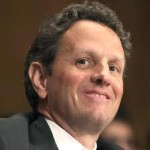 In his August 22nd article, Greg Palast posted a screenshot of a 1997 memo from Timothy Geithner, then Assistant Secretary of International Affairs under Robert Rubin, to Larry Summers, then Deputy Secretary of the Treasury. Geithner referred in the memo to the “end-game of WTO financial services negotiations” and urged Summers to touch base with the CEOs of Goldman Sachs, Merrill Lynch, Bank of America, Citibank, and Chase Manhattan Bank, for whom private phone numbers were provided.
In his August 22nd article, Greg Palast posted a screenshot of a 1997 memo from Timothy Geithner, then Assistant Secretary of International Affairs under Robert Rubin, to Larry Summers, then Deputy Secretary of the Treasury. Geithner referred in the memo to the “end-game of WTO financial services negotiations” and urged Summers to touch base with the CEOs of Goldman Sachs, Merrill Lynch, Bank of America, Citibank, and Chase Manhattan Bank, for whom private phone numbers were provided.
The game then in play was the deregulation of banks so that they could gamble in the lucrative new field of derivatives. To pull this off required, first, the repeal of Glass-Steagall, the 1933 Act that imposed a firewall between investment banking and depository banking in order to protect depositors’ funds from bank gambling. But the plan required more than just deregulating US banks. Banking controls had to be eliminated globally so that money would not flee to nations with safer banking laws. The “endgame” was to achieve this global deregulation through an obscure addendum to the international trade agreements policed by the World Trade Organization, called the Financial Services Agreement. Palast wrote:
Until the bankers began their play, the WTO agreements dealt simply with trade in goods–that is, my cars for your bananas. The new rules ginned-up by Summers and the banks would force all nations to accept trade in “bads” – toxic assets like financial derivatives.
Until the bankers’ re-draft of the FSA, each nation controlled and chartered the banks within their own borders. The new rules of the game would force every nation to open their markets to Citibank, JP Morgan and their derivatives “products.”
And all 156 nations in the WTO would have to smash down their own Glass-Steagall divisions between commercial savings banks and the investment banks that gamble with derivatives.
The job of turning the FSA into the bankers’ battering ram was given to Geithner, who was named Ambassador to the World Trade Organization.
WTO members were induced to sign the agreement by threatening their access to global markets if they refused; and they all did sign, except Brazil. Brazil was then threatened with an embargo; but its resistance paid off, since it alone among Western nations survived and thrived during the 2007-2009 crisis. As for the others:
The new FSA pulled the lid off the Pandora’s box of worldwide derivatives trade. Among the notorious transactions legalized: Goldman Sachs (where Treasury Secretary Rubin had been Co-Chairman) worked a secret euro-derivatives swap with Greece which, ultimately, destroyed that nation. Ecuador, its own banking sector de-regulated and demolished, exploded into riots. Argentina had to sell off its oil companies (to the Spanish) and water systems (to Enron) while its teachers hunted for food in garbage cans. Then, Bankers Gone Wild in the Eurozone dove head-first into derivatives pools without knowing how to swim–and the continent is now being sold off in tiny, cheap pieces to Germany.
The Holdouts – US Conspiracy to “Take Down” Islamic Countries Because They Refuse Usury.
 That was the fate of countries in the WTO, but Palast did not discuss those that were not in that organization at all, including Iraq, Syria, Lebanon, Libya, Somalia, Sudan, and Iran. These seven countries were named by U.S. General Wesley Clark (Ret.) in a 2007 “Democracy Now” interview [5] as the new “rogue states” being targeted for take down after September 11, 2001. He said that about 10 days after 9-11, he was told by a general that the decision had been made to go to war with Iraq. Later, the same general said they planned to take out seven countries in five years: Iraq, Syria, Lebanon, Libya, Somalia, Sudan, and Iran.
That was the fate of countries in the WTO, but Palast did not discuss those that were not in that organization at all, including Iraq, Syria, Lebanon, Libya, Somalia, Sudan, and Iran. These seven countries were named by U.S. General Wesley Clark (Ret.) in a 2007 “Democracy Now” interview [5] as the new “rogue states” being targeted for take down after September 11, 2001. He said that about 10 days after 9-11, he was told by a general that the decision had been made to go to war with Iraq. Later, the same general said they planned to take out seven countries in five years: Iraq, Syria, Lebanon, Libya, Somalia, Sudan, and Iran.
What did these countries have in common? Besides being Islamic, they were not members either of the WTO or of the Bank for International Settlements [6] (BIS). That left them outside the long regulatory arm of the central bankers’ central bank in Switzerland. Other countries later identified as “rogue states [7]” that were also not members of the BIS included North Korea, Cuba, and Afghanistan.
The body regulating banks today is called the Financial Stability Board (FSB), and it is housed in the BIS in Switzerland. In 2009, the heads of the G20 nations agreed to be bound by rules imposed by the FSB, ostensibly to prevent another global banking crisis. Its regulations are not merely advisory but are binding, and they can make or break not just banks but whole nations. This was first demonstrated in 1989, when the Basel I Accord raised capital requirements a mere 2%, from 6% to 8%. The result [8] was to force a drastic reduction in lending by major Japanese banks, which were then the world’s largest and most powerful creditors. They were undercapitalized, however, relative to other banks. The Japanese economy sank along with its banks and has yet to fully recover.
Among other game-changing regulations in play under the FSB are Basel III and the new bail-in rules. Basel III is slated to impose crippling capital requirements on public, cooperative and community banks, coercing their sale to large multinational banks.
The “bail-in” template was first tested in Cyprus and follows regulations imposed by the FSB in 2011. Too-big-to-fail banks are required to draft “living wills” [9] setting forth how they will avoid insolvency in the absence of government bailouts. The FSB solution is to “bail in” creditors – including depositors – turning deposits into bank stock, effectively confiscating them.
The Public Bank Alternative
Countries laboring under the yoke of an extractive private banking system are being forced into “structural adjustment” and austerity by their unrepayable debt. But some countries have managed to escape. In the Middle East, these are the targeted “rogue nations.” Their state-owned banks can issue the credit of the state on behalf of the state, leveraging public funds for public use without paying a massive tribute to private middlemen. Generous state funding allows them to provide generously for their people.
Like Libya and Iraq before they were embroiled in war, Syria provides free education at all levels [10] and free medical care. It also provides subsidized housing for everyone (although some of this has been compromised by adoption of an IMF structural adjustment program in 2006 and the presence of about 2 million Iraqi and Palestinian refugees). Iran too provides nearly free higher education [11] and primary health care [12].
Like Libya and Iraq before takedown, Syria and Iran have state-owned central banks [13] that issue the national currency and are under government control. Whether these countries will succeed in maintaining their financial sovereignty in the face of enormous economic, political and military pressure remains to be seen.
As for Larry Summers, after proceeding through the revolving door to head Citigroup, he became State Senator Barack Obama’s key campaign benefactor. He played a key role in the banking deregulation that brought on the current crisis, causing millions of US citizens to lose their jobs and their homes. Yet Summers is President Obama’s first choice to replace Ben Bernanke as Federal Reserve Chairman. Why? He has proven he can manipulate the system to make the world safe for Wall Street; and in an upside-down world in which bankers rule, that seems to be the name of the game.
Check out Ellen Brown at:
http://publicbankinginstitute.
Money Is Not Safe In The Big Banks
Money Is Not Safe In The Big Banks
